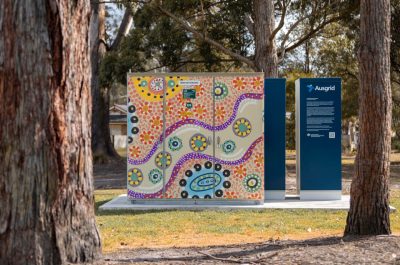Is there life on Mars?
Earthlings (and Hollywood) have often wondered about the potential for life on another planet, or indeed if we could inhabit one. For the foreseeable future there isn’t, and we need to look after the one we have. Entire economies are shifting towards a net zero future, so we need to fast track the infrastructure that supports these ambitions. Last October, Energy Ministers agreed to improve the coordination of electricity and gas planning by” supercharging” the AEMO’s Integrated System Plan This will be a bumpy road, but one we need to take as there is no planet B.
Last year, Energy Ministers agreed to improve the coordination of electricity and gas planning by reviewing the Integrated System Plan (ISP) to “supercharge” the planning system across the sector to support amore coordinated investment and planning across Australia. The Energy and Climate Change Ministerial Council (ECMC) agreed to the terms of reference for the ISP review in July last year, setting an almighty agenda to manage energy reliability and affordability to help us reach Net Zero by 2050.
The ISP sets out to integrate electricity and gas planning, and will consider gas fired generation, demand and the necessary transition pathways. This “supercharged” ISP review will include generation, storage, transmission and distribution requirements to maintain affordable and reliable energy for consumers.
The review is being undertaken in two stages:
- Firstly, quick and easy enhancements that can be made for the 2024 ISP, in anticipation for the Draft 2024 ISP, which is expected to be released in December 2023 for comment.
- Secondly, the more comprehensive changes needed to support the 2026 ISP. Presumably the completed review will result in the Federal Energy Minister leading the recommended or required rule changes in mid-2024. These changes could take a further two years of rule-making and possible guideline-making and may need significant procedural and IT system changes. All of which puts a tight timing constraint on material needed to meet July 2025 deadline.
As ENA shared in the Whole of System Planning – the best emissions benefit comes from electrifying light transport and moving away from coal. But we can’t neglect to see the importance of ensuring industry has alternative fuels to gas for processes that can’t be electrified.
The barriers to planning and construction of ISP projects are also being looked at and will feed into this review, however there are some clear observations that cannot be looked over:
Social license – there are some nine processes underway looking at social license, including developing guidelines. What is needed is an appropriate fit-for-purpose community engagement framework supported by funding for transmission networks. The compensation framework both at the landholder and community benefits level should be fair, equitable and fit for purpose.
Environment and planning approvals – These approvals are time-consuming. Significant rework can be required where the network planner and delivery parties differ. Improvements in environmental and planning approvals would help facilitate timeliness as would the ability to undertake more early works in relation to community engagement and route selection, as well as cultural and environmental studies. This would need to be accompanied by sufficient early works funding and the ability to progress early procurement planning and contracting for long lead time items.
A Skilled work force also needs to be increased via migration and training, both with local content and local resourcing. Sequencing of transmission projects could allow a smoother workflow but needs to be factored into TNSPs project delivery timeframes. Creating more planners or more networks only serve to spread the key planning resources more thinly and increase the level of poaching, ultimately this increases costs for all network.
Supply chains – The UK is making major changes to its framework to accelerate transmission investment. The rationale was noted in our Rewiring the UK article. A key element of this is to give the established transmission businesses certainty that they will be the parties proceeding with the projects agreed in the central plan. This allows them to accelerate project delivery by bringing forward community engagement, route refinement, enabling works and procurement commitments. It also enables a programme of work or portfolio of projects to be efficiently sequenced, with associated cost benefits. UK recognise the stretched global supply chain and are encouraging the TNSPs to establish long term relationships with key providers.
Regulatory constraints – it will be important regulatory frameworks support the financeability of projects consistent with the Energy Ministers rule change request to resolve the issues in the regulatory framework without the need to rely on government funding. It is crucial that rules seek to provide the level of certainty that investors need early in the life of the project. Every regulatory change or decision needs to consider if it is adding value to consumers, ensuring beneficial projects proceed in a timely and efficient manner.
Managing the state interactions – a future focus
The state and federal governments are active in the policy space in gas and electricity from supply to end use consumers. Getting the policies out of the cupboard and included as key inputs into the ISP would be beneficial. The ISP is a comprehensive plan identifying an optimal transmission development path. One area of focus that might be valuable could be to seek to identify options to better incorporate the future plans of state governments to ensure the optimal development path remains robust to both the future scenarios considered and to potential state developments.
States taking on planning need to have clear network plans provided as input into the ISP. The integration of the plans need to form a reliable integrated network, one that is operable and resilient and one that can have outages and be maintained. It is the overall electricity grid that keeps the lights on and resilient for all.
Given the length of time to deliver the projects and gain the approvals consideration could be given to lifting the lid to allow more sensible anticipatory planning for expected demand. Recent TAPR consultations have noted a range of state policies which would increase demand and heightened level of generation connection interest. Should there be some probabilistic planning that if the P50 level of this expected demand increase proceeded what would the network need to look like? Would it be appropriate to lift the lid on forecasting to enable a more forward thinking approach now that we are no longer in a flat demand world? Could we better integrate the capacity incentive scheme and the ISP?
Integrating electricity and gas planning is a large exercise in itself. Integrating gas better should be part of continuous improvement without increasing the costs of the ISP further. Avenues to move to a more forward looking policy and demand focus, perhaps streamlining and reducing some of the regulatory and modelling burden of the ISP’s development may assist. Creating more red tape in the development and regulatory processes and further layers of planners, committees and bureaucracy in unlikely to be helpful. There is no time to lose because there is no planet B.



